Everyone knows how to cook rice, right? Well, not necessarily. While cooking rice is a basic cooking technique, it also happens to be one that many people have never taken the time to learn properly.
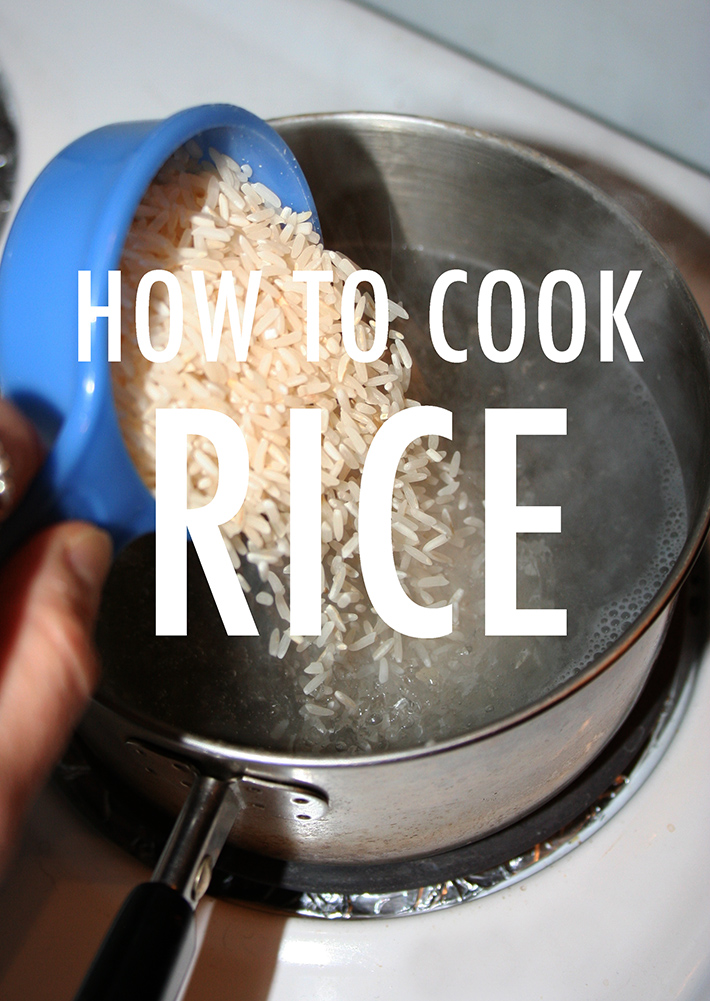
Go back to basics and learn how to cook rice properly!
Photos via CakeSpy unless otherwise noted
In the spirit of culinary enrichment, it’s worth taking the time to go back to basics with the art of cooking rice. By educating yourself on rice, including the different types and different styles of prepping and preparing it, you can expand your culinary horizons, learn something new, and make your side dish sparkle. Here, we’ll explore rice from all angles, starting with the basic question of what rice is, then moving on to how to select and buy rice and how to cook it in five different easy ways.
What is rice?
It’s a simple enough question. The short answer? Swamp grass seeds.
The longer answer? Rice is the seed of certain grass species that grow in swampy, wet conditions. The seeds are cultivated as a cereal grain, which is one of the world’s largest agricultural commodities, and a staple food for much of the world’s population: Nearly 1/5 of the world’s calorie consumption is rice.
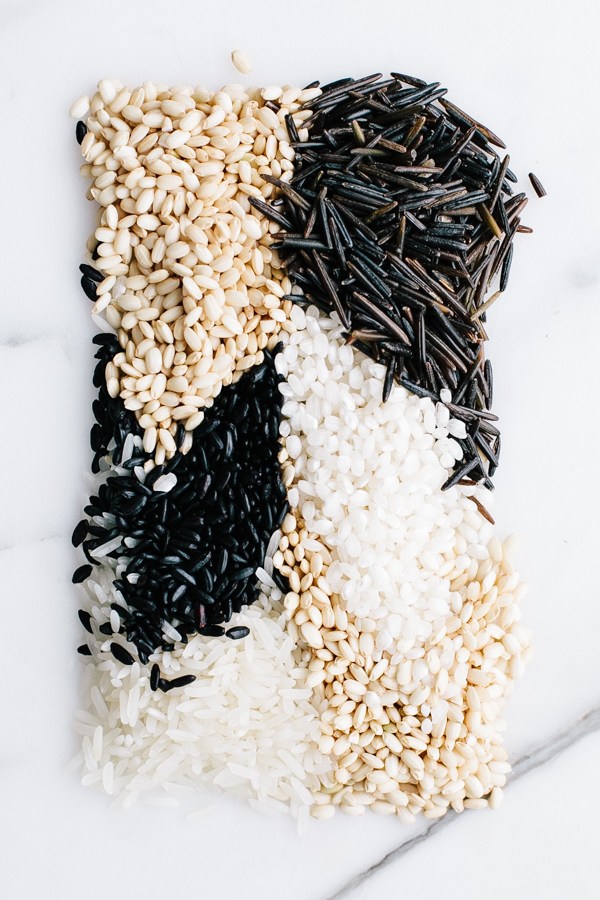
Photo via Craftsy blog
What are the different types of rice?
There are thousands (over 40,000, actually!) of individual types of rice. There are also numerous ways to classify them, but for simplicity, we’ll classify them by their grain. Within the type of grain, you’ll find white, brown and other varieties. For a more detailed look at the types of rice within each of the categories, check out this guide to the different types of rice.
Long grain
Long-grain rice is probably the most familiar type of rice in the USA. It’s characterized by long, thin kernels, which are sometimes quite cylindrical but can also be tapered at the ends. Types of long-grain rice include basmati and jasmine rice; often, if you buy a container simply labeled “white rice,” it will be a long-grain variety.
Medium grain
Medium-grain rices are typically shorter and slightly fatter than their long-grain counterparts. They are absorbent and can be slightly stickier than long-grain rices. Types of medium grain rice include Japanese-style rice and bomba rice.
Short grain
Short-grain rices are even shorter than medium-grain varieties, and they usually have a slightly rounded shape. A higher concentration of starch can make them stickier. Perhaps the most famous example of short grain rice is arborio rice, which is used to make risotto.
Specialty rices
Within the different grain lengths, you’ll find all sorts of interesting specialty rices. Here are just a few:
Black rice
This is a whole-grain rice that cooks fairly firm and is characterized by its rich, unique color — which is indeed black when the rice is in grain form, but can take on a violet tinge when cooked. Black rice has a nutty flavor and chewy texture.
Red rice
This unique type of rice is literally red — it has a brick-like hue. Its color comes from a high content of naturally occurring anthocyanin, a fatty compound that boasts a myriad of health benefits. Red rice is typically partially hulled or unhulled to maintain its color and nutrition.
Wild rice
Here’s a secret: Wild rice actually is not rice at all! It’s a grass seed that’s native to North America, and it has an earthy flavor, varied earth-tone colors and a chewy texture. While true wild rice can be found at specialty stores or directly from producers, much of the commercial “wild rice” on the market these days is actually cultivated.
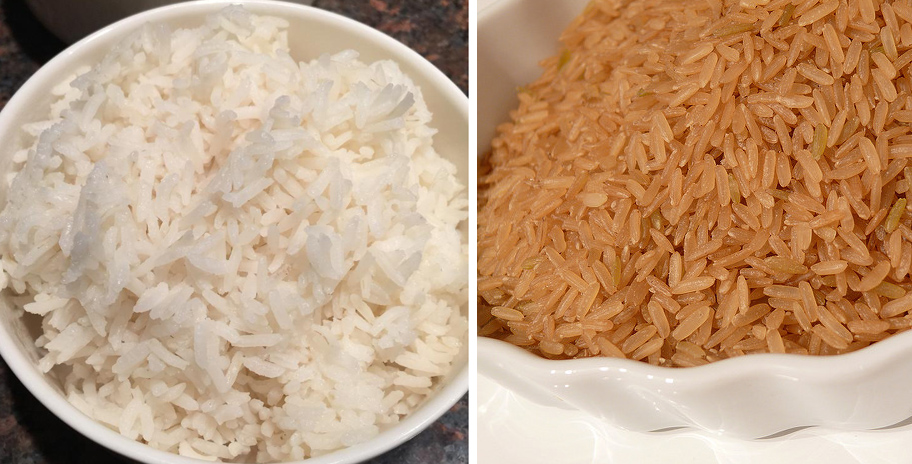
Jasmine rice via Craftsy member debs121212; brown rice photo licensed via Creative Commons by Flickr member arriabelli
What is the difference between brown and white rice?
While there are many more types of rice than simply brown and white, those are arguably the two key rices. So what is the difference?
Basically, brown rice is the whole grain counterpart to white rice. While the hull is removed from brown rice, the bran and germ layers are left intact, which gives the rice a slightly chewier texture and nutty flavor.
On the other hand, if rice is further milled then polished, it produces white rice. While this process makes white rice longer-lasting and can yield a fluffier texture, it can also remove some of the health benefits of rice because the bran and germ layers — which contain the healthy fibers — are removed.
The health benefits of minimally processed rice include high levels of manganese, selenium, phosphorus, B vitamins and magnesium. These are largely stripped from white rice, but that doesn’t mean that white rice is totally without health benefits. According to American Rice, Inc., a U.S. law requires all enriched rice to be fortified with folic acid (a key B vitamin) and other nutrients including thiamin, iron and niacin.
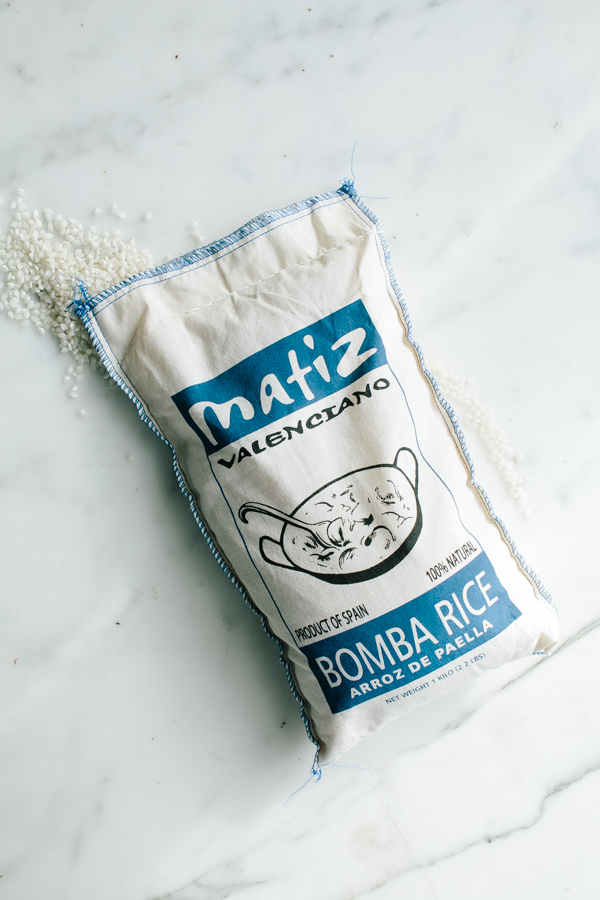
Photo via Craftsy blog
How to buy rice
While rice might seem like a non-perishable food that lasts forever, this is not the case. White rice, when kept in an airtight container, does last an awfully long time: a year or more. Some accounts will give certain varieties of white rice a lifespan of 20 or more years. Brown rice or whole grain rice, on the other hand, will only last about six months in an airtight container; the shelf life can be extended to about a year if stored in the refrigerator.
When buying rice, be sure to buy from a reputable source with high turnover (an Asian market is a great place to shop for rice). Some manufacturers list the production date; be sure to buy the most recent one. If possible, look on the packaging for an expiration date, as well.
Before you cook: rinsing and soaking rice
Rinsing rice
Before you cook rice, do you need to rinse it? There are different camps on the subject. Some say nay, that it strips the rice of flavor and nutrients. Others say it’s vital, because not only does it help to reduce impurities or any coatings that may be on the rice (either natural compounds or occurring during manufacturing and processing), but it can also remove an outer layer of starch, reducing the stickiness of the finished rice.
Personally, I suggest a brief rinse, figuring that any nutrients that are washed away are negligible compared to the possibility of ingesting some sort of contaminant. To rinse rice, place it in a fine mesh sieve and rinse with water several times. That’s it! It only takes a minute.
Soaking rice
What about soaking your rice? Some say that soaking your rice can help soften the texture; others argue it’s totally unnecessary. Ultimately, it depends on your texture preference and the type of rice in question. Adhere to the serving suggestion on the rice you purchase.
How to cook rice five ways
Now that you’re educated on the ways of rice, you’ve got some great conversation for while you cook it. Here are five different ways.
Before you begin: Liquid amounts for cooking different types of rice
The instructions for these five methods of cooking rice list long-grain white rice in the ingredients for consistency and ease of use. Liquid amounts may vary depending on different types of rice, particularly when using whole-grain rice, which, like other whole grains, is “thirstier” and requires more liquid.
This guide can act as a good starting point, but be sure to read the instructions on the packaging to see the ideal ratio of water to rice. All liquid quantities are per one cup of uncooked rice. These amounts can be adjusted up or down depending on how moist or dry you prefer your rice.
- Long-grain white rice: 1 3/4 cups water
- Medium-grain white rice: 1 1/2 cups water
- Short-grain white rice: 1 1/4 cups water
- Brown rice: 2 to 2 1/4 cups water
1. Absorption method
In this classic method of preparing rice, you cook the rice with an equal or slightly greater volume of water, then cook over low heat until the rice has absorbed all of the water.
Ingredients:
- 1 cup long grain white rice
- 1 3/4 cups water
- Pinch of salt
Step 1:
Place the water in a medium saucepan and bring it to a boil. Add the rice and salt. Let the mixture come back to a boil, then immediately turn the heat down to a simmer.
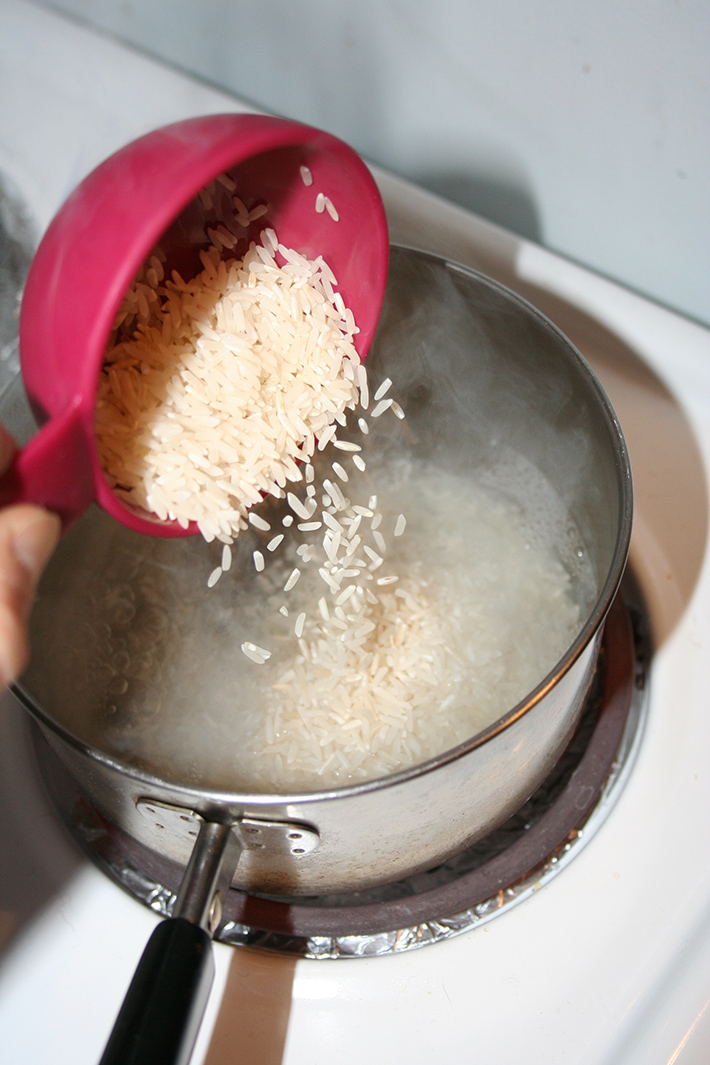
Step 2:
Cover and let the rice cook until it has absorbed all of the liquid, about 15 to 20 minutes (check the rice at the 15-minute mark).
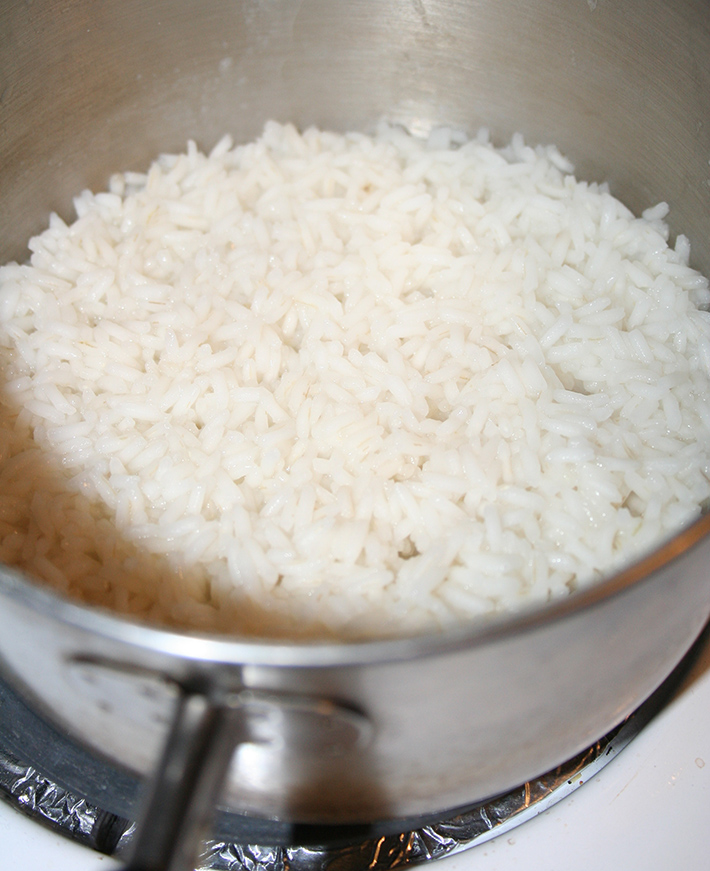
2. Absoption method in the microwave
As a variation on the absorption method, you can prepare rice in the microwave! It’s easy, requires minimal monitoring and yields reliable results.
Ingredients:
- 1 cup long-grain white rice
- 1 3/4 cups water
- Pinch of salt
Step 1:
Place the water, rice and salt in a large, microwave-safe bowl.
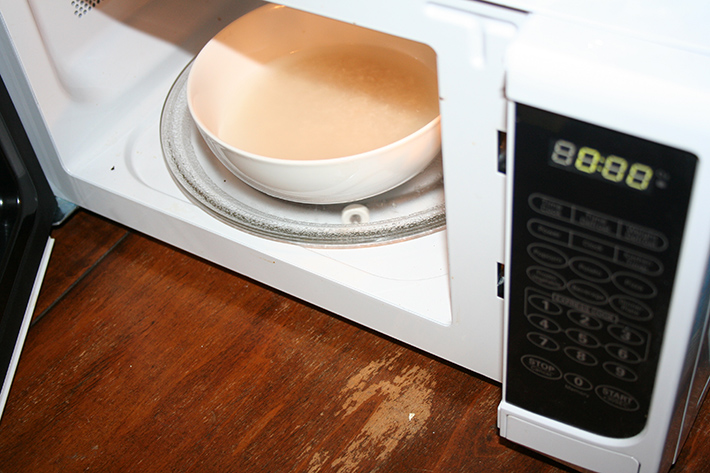
Step 2:
Microwave on high, uncovered, until the liquid has been absorbed and the rice is tender and fluffy. This can take anywhere from 12 to 18 minutes; begin monitoring at the 10 minute mark.

3. Rapid-boil method
If this method seems familiar, it’s because it’s very similar to how you might cook pasta. This method is favored by many professional chefs, because it can be prepared fairly quickly.
Ingredients:
- 4 cups water
- 1 cup rice
- Pinch of salt
Step 1:
Place the water in a large saucepan. Bring the water to a rolling boil, then add the rice and salt.
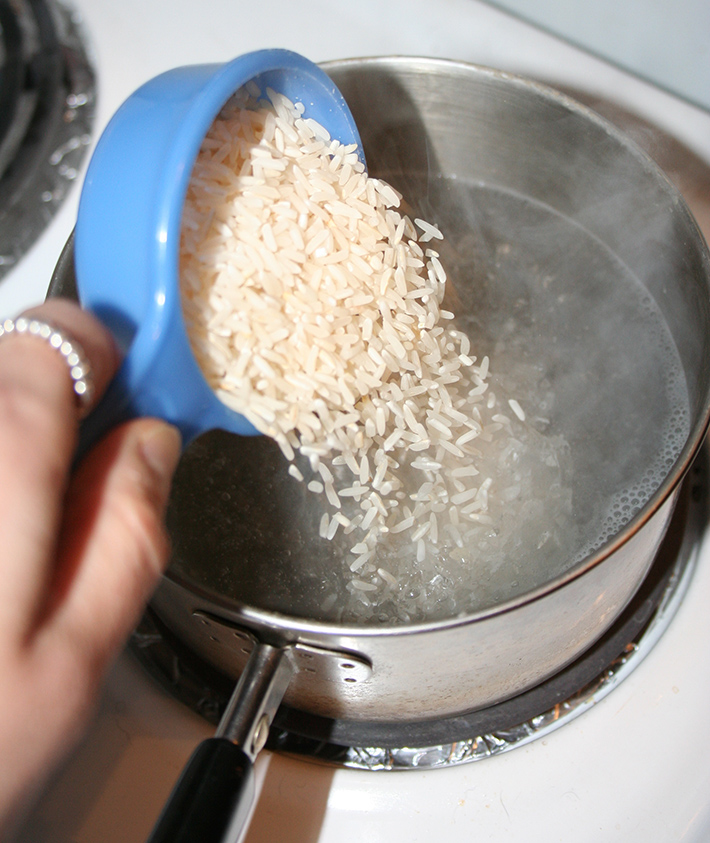
Step 2:
Let the rice cook in the boiling water, uncovered, for 7 minutes. Reduce the heat slightly if the water begins to bubble over, but keep the heat as high as you can. Test a kernel for doneness. If it is cooked to your liking, remove the pan from heat. If it is not quite cooked to your liking yet, let it cook another minute or two.
Step 3:
Strain the rice through a strainer or fine mesh sieve (depending on how small the kernels are). Let the rice sit for several minutes; fluff with a fork before serving.
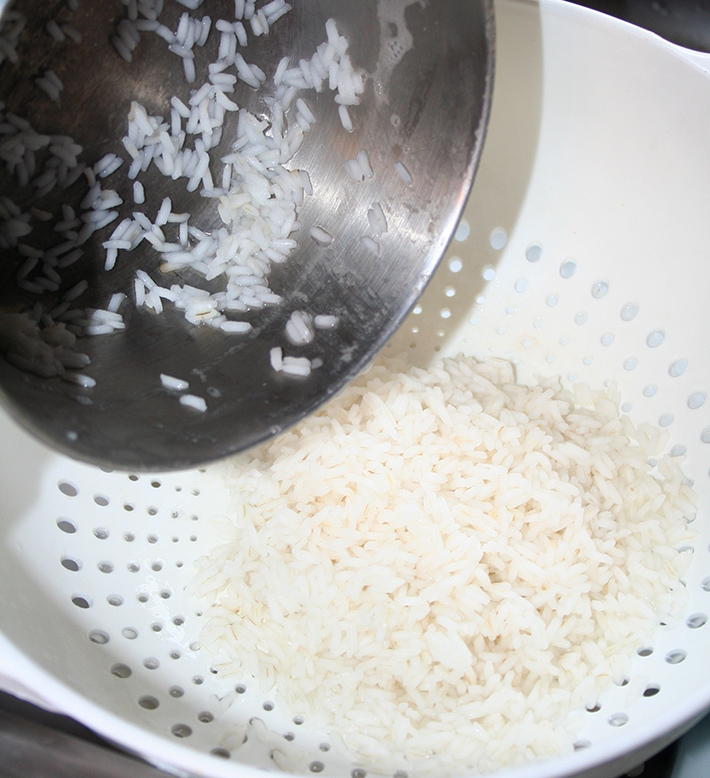
4. Fry or toast then boil
This is a classic method of preparing rice, referred to as “pilaf” or “biryani” in different parts of the world. It’s actually somewhat similar to the absorption method, but with the added step of toasting the rice in fat before adding the liquid.
Note: For consistency, long-grain white rice is included in this ingredient list, but this method is traditionally used for dishes like risotto.
Ingredients:
- 2 tablespoons oil, butter or other fat
- Aromatics of your choosing (garlic, onions, etc.)
- 1 cup long-grain white rice
- 1 3/4 cups water (or other liquid)
- Pinch of salt
Step 1:
In the bottom of a large saucepan or stock pot, heat the oil and aromatics until shimmering and releasing aroma.
Step 2:
Add the rice, and “toast” it until it begins to look slightly translucent and the kernels are coated.
Step 3:
Reduce heat briefly. Add the liquid and salt. Bring the mixture to a simmer, cover and cook until the liquid has been absorbed, 12 to 18 minutes.
5. In a rice cooker
A rice cooker, which often resembles a slow cooker, will cook your rice for you, using the absorption method. It has the added benefit of keeping your rice warm after it is prepared. If you are cooking for a crowd or enjoy rice often, a rice cooker is a worthwhile investment.
Instructions will vary slightly from machine to machine, so be sure to follow the instructions on your model.
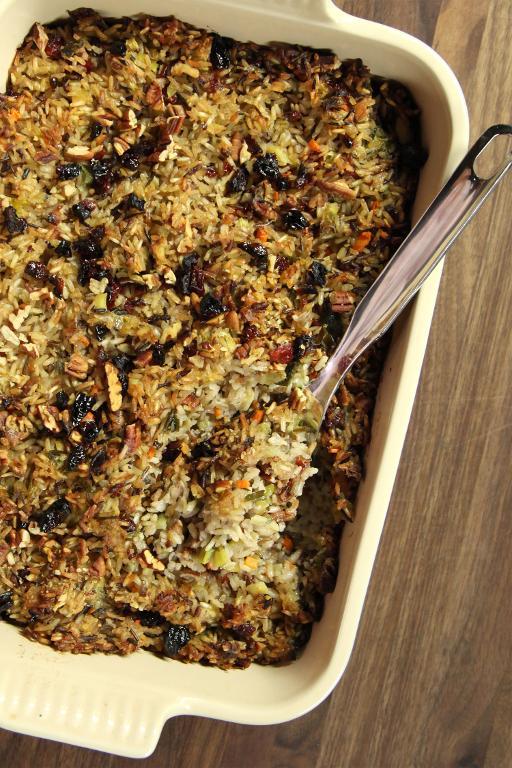
Wild rice stuffing via Craftsy instructor Anna Bullett
Once your rice is cooked
Once your rice is cooked, there are endless ways to use it in your cooking. Perhaps you’ll use it as a simple side dish, or maybe you’ll create a hearty stuffing or a satisfying Chinese takeout–style fried rice. Or maybe you’ll swing on over to the sweet side and prepare a black rice pudding.

How long does cooked rice stay fresh?